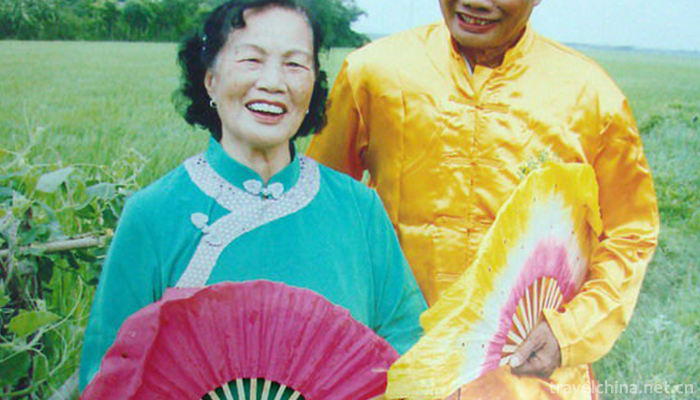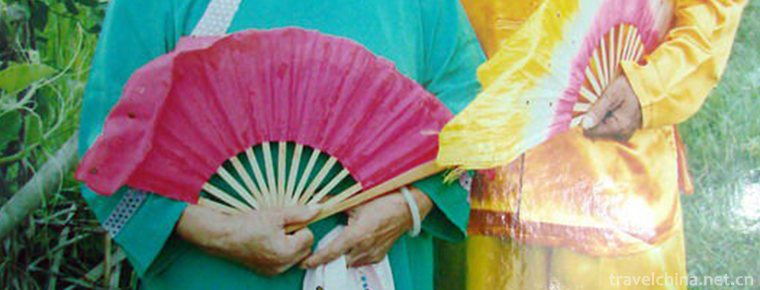Leizhou song
Leizhou song
Leizhou Song, folk literature of Leizhou City, Guangdong Province, is one of the national intangible cultural heritage.
According to the records in historical books, Leizhou songs were prevalent as early as the Song Dynasty. After the 1990s, people divided Leizhou dialect into different rhymes to express different content functions.
In 2008, Leizhou Song was selected as the second batch of national intangible cultural heritage, numbered I-81.
historical origin
According to the records in historical books, Leizhou songs had been popular as early as the Song Dynasty. It can be said that Leizhou song is a reflection of the whole Leizhou culture, an important part of the Yanhuang culture, and at the same time it adds a new glory to the Yanhuang culture. The local people in Leizhou have regarded Leizhou songs as important as eating and dressing. Not only that, Leizhou Opera also derives from Leizhou Opera, one of the four major operas in Eastern Province, in which the lyrics of Leizhou Opera are Leizhou Song.
Leizhou Song has been spread to Minnan-speaking areas and countries in a long time. As early as before the Republic of China, Leizhou's "Girl" song group went to Leizhou Chinese and overseas Chinese areas in Southeast Asian countries to sing.
In the 1990s, according to the practical requirements of the masses, Zhanjiang Leige Research Association divided the rhymes of Leizhou songs into Leizhou dialects. Different rhymes have the function of expressing different contents.
Cultural characteristics
Structurally rigorous, level and harmonious, beautiful rhythm. Each 4 sentences, 7 words per sentence, some of which can be added 2 to 3 words before each sentence, called "song pad"; the first, second and fourth sentences end with Leizhou phonology (in which the first sentence end can not use Yang Ping, the second sentence end with Yin Ping, the fourth sentence end with Yang Ping); the third sentence end without rhyme, but must be dull; the second and fourth sentences end with Yang Ping. This is Leizhou Gege Rule. This kind of rhythm is close to seven absolute, and it is very catchy to sing. Its tone is free, joy, anger, sadness and joy can sing freely at will, such as when a loved one dies, singing instead of crying; when a woman is married, her sisters concentrate at night, singing with love. There is a popular saying in Leizhou called "one singing to the city", that is, singing continuously along the way to the town. This kind of free tone can be sung at the beginning, which makes Leizhou songs passed down from generation to generation.
Inheritance and protection
Inheritance value
With the continuous changes of the times, the theme of Leizhou songs has also been sublimated. In addition, the folk songs resources in Leizhou Peninsula are also very rich, therefore, Leizhou songs have very precious historical value and practical significance.
In Leizhou Peninsula, people like to sing Leizhou songs, whether they are literati or rural wives, elderly people or children and women. The emergence of Leizhou songs has been closely following and recording the history of Leizhou. It can be said that Leizhou people's birth, migration, labor, life and other oral history. The "girl" song is derived from the contra-singing of Leizhou song, and the "exhortation song" in the "girl" song is derived from Leizhou opera. It can be seen that Leizhou song occupies a very important historical and artistic value in Leizhou culture.
Inheritance status
Affected by the change of life style, the living inheritance environment of Leizhou Song is gradually losing, and measures are urgently needed to protect it.


-
1.Baishuiyang Yuanyangxi Tourist Area
Baishuiyang Mandarin Creek is located in Pingnan County, Ningde City, Fujian Province. It is 170 kilometers away from Fuzhou and 101 kilometers away from Ningde
Time 2018-12-08 -
2.Jinxiangshan Paradise
Jinxiang Mountain Scenic Spot in Jinan, Shandong Province, is located in the southern mountainous area of Jinan. It is endowed with unique topography, landform and rich forest resources
Time 2019-01-29 -
3.Dongguan Longfeng Villa Film and Television Resort
Longfeng Villa Film and Television Resort officially opened on April 18, 2005. Since its opening, it has developed from a single tourist attraction into a large-scale theme wedding dress shooting base
Time 2019-02-03 -
4.Taierzhuang Ancient City Scenic Area
Taierzhuang Ancient City, located at the center of the Beijing-Hangzhou Grand Canal, is located at the junction of Taierzhuang District, Zaozhuang City, Shandong Province
Time 2019-02-13 -
5.Dai nationality Zhang ha
Dai Zhangha, also known as "Zanha", is a traditional form of Dai folk song, which is spread in Xishuangbanna Dai Autonomous Prefecture in the southern border of Yunnan Province and Dai villa
Time 2019-04-24 -
6.Wo Lou dance
Helou Dance is a traditional folk entertainment program in Yunan County, Guangdong Province. It is called "living fossil" in traditional dance. Helou Dance is the product of
Time 2019-05-02 -
7.Sanhui Pavilion Club
Sanhui Caiting Pavilion is a local traditional folk cultural activity that performs in streets or squares on March 16-18 of the lunar calendar every year. Its artistic form of performance is ingenious
Time 2019-06-12 -
8.Eighteen Butterflies
Eighteen butterflies is a local traditional dance form popular in the central part of Zhejiang Province (mainly in the area of Jinhua Yongkang). Twenty young women play the whole set of eighteen butte
Time 2019-06-15 -
9.Tajik Folk Songs
Tajik folk songs are very rich in content. The folk songs handed down to this day include folk songs reflecting ancient social life, customs and customs, eulogizing love and religious rituals. The mai
Time 2019-06-17 -
10.Tu Costume
Women usually wear embroidered small collar and long slant-skinned shirt. The sleeves are made of red, yellow, orange, blue, white, green and black seven-color cloth rings. They are bright and beautif
Time 2019-06-23 -
11.Ying Luohan
Yingluohan is a form of traditional folk entertainment which integrates martial arts and folklore in the traditional festival activities in Jinyun County, Zhejiang Province. This kind of activity also
Time 2019-07-14 -
12.Zerou
Zerou (Shangyu Zerou), also known as Ashze, is a Tibetan folk dance in Guide County, Qinghai Province. Especially "Shangyu (Chinese: lower row) is soft" is the most important. They often per
Time 2019-07-16